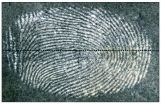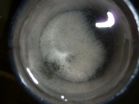(Press-News.org) (Philadelphia, PA) – Scientists for the first time have evidence showing how a widely used type of "targeted" cancer drug can be dangerous to the heart.
Studying mice with the equivalent of a heart attack, researchers found that the drug sorafenib (Nexavar) – which inhibits proteins called tyrosine kinase receptors (RTKs), and is used in kidney and liver cancer treatment – can interfere with heart stem cell activity, affecting the heart's ability to repair itself after injury. The findings suggest that sorafenib and other similar drugs that target these kinds of protein receptors may raise the risk for heart attack for some cancer patients with underlying heart disease, as well as affect the heart's ability to repair damage. By understanding how these cancer drugs can affect the heart, scientists and clinicians may be able to devise new treatment strategies to lessen such potentially damaging effects of often vital cancer drugs.
"The goal is not to take the drug off of the market – it's a very good and useful drug that cancer patients need. We're trying to understand how this cancer drug and others like it can affect the heart, and what types of individuals might be at risk for problems," said senior author Steven Houser, PhD, Professor and Chair of Physiology at Temple University School of Medicine and Director of Temple's Cardiovascular Research Center. "Our results are beginning to provide a clearer picture of some of the potential physiological mechanisms at play."
Dr. Houser, first author Catherine Makarewich, a graduate student, and their co-workers reported their findings November 5, 2012 at the Late-Breaking Basic Science Session at the American Heart Association's Scientific Sessions in Los Angeles.
Sorafenib is a member of a broad class of anticancer drugs called targeted therapies that halt cancer growth, rather than necessarily trying to eliminate the disease. Termed a "multi-kinase" inhibitor, sorafenib blocks the activity of a range of protein enzymes and specific targets in the cell that can contribute to the development and growth of cancer. In this case, sorafenib inhibits several RTKs, including c-kit, a receptor found on cardiac progenitor cells in heart and bone marrow, and can prevent the cardiac stem cell population from growing. Such progenitor and stem cell populations play important roles in cardiac repair.
Mortality Rates Following Induced Heart Attacks
The researchers wanted to see if they could better understand the mechanism behind these toxic effects. In the study, normal mice were given sorafenib for a week before being made to have the equivalent of a heart attack, and compared to mice that had a heart attack without receiving the drug. After one week, the mice that received sorafenib had significantly worse heart damage than the other group. Only 40 percent of those mice, versus 72 percent of the other group, were alive after one week. According to Dr. Houser, the doses were equivalent to those cancer patients would typically receive. Sorafenib by itself had no discernible effect on the mice prior to heart attack.
"Our study was to see if such a drug would put individuals with cancer and ischemic heart disease at extra risk for a heart attack," he said. "Mice given sorafenib and then made to have the equivalent of ischemic disease and a heart attack had much poorer heart function and survival. The drug put the animals at much greater risk for heart damage and death compared to animals without the drug."
Cancer patients tend to be middle-aged and older, and often have other significant health issues, including underlying heart disease. As a result, in patients with ischemic heart disease, there is already damage under repair. Drugs such as sorafenib may block or slow this repair process and increase the risk for a heart attack, Dr. Houser said.
Repair Process Inhibited
The researchers subsequently treated bone marrow stem cells, heart stem cells, and heart muscle cells (myocytes) with sorafenib in the laboratory dish. The drug blocked both types of stem cells from growing, but had no effect on normal heart muscle cells. This meant that the drug likely doesn't affect normal heart cells that were not damaged and under repair, Dr. Houser pointed out. "Injury activates the proliferation of the stem cells," he said. "We think it's something about the repair process that the drug affects."
He and his team would like to find drugs that could be taken alongside cancer drugs such as sorafenib that would reduce adverse effects on heart stem cells. At this time, they are developing a program to screen candidate agents. "Ideally, we could help physicians predict which patients are at higher risk for these effects, and find better ways to screen patients," Dr. Houser said.
The investigators next plan to test therapies to stimulate repair and protect hearts from potential damage from such cancer drugs.
###Others contributing to this research include Thomas Force, Jason M. Duran, Thomas E. Sharp III, Ronald J. Vagnozzi, Remus M. Berretta, and Hajime Kubo, Temple University School of Medicine.
The research was supported by grants from the National Institutes of Health and the American Heart Association.
Temple researchers show targeted cancer drug may stunt heart's ability to repair itself
2012-11-06
ELSE PRESS RELEASES FROM THIS DATE:
Losing protein helps heart recover, say Temple scientists
2012-11-06
(Philadelphia, PA) – When a person has a heart attack, portions of the heart muscle die in the next several days or even weeks if deprived of oxygen for long enough. The recovering heart slowly remodels itself, even fostering the growth of new blood vessels, in an attempt to regain some of its former function. But all too often, the remodeling is actually harmful, and the damaged heart is on an inevitable downward slide to heart failure.
Now, scientists at the Center for Translational Medicine at Temple University School of Medicine have identified a key target they hope ...
Taiho Pharmaceutical unveils data on 8 novel anticancer compounds
2012-11-06
DUBLIN, November 6, 2012 – Taiho Pharmaceutical Co., Ltd. (HQ: Tokyo, President: Masayuki Kobayashi), the developer of the first orally available fluorouracil (FU) Chemotherapeutic treatment (TS-1/S-1), is presenting early stage data for eight novel oncology compounds, including potential first-in-class therapies. The data being presented during the 24th EORTC-NCI-AACR Symposium on Molecular Targets and Cancer Therapeutics from November 6 – 9, 2012 in Dublin, Ireland underscore Taiho's steadfast commitment to improving cornerstone anti-metabolic cancer agents and developing ...
Rebuilding a whole heart for children born with only half of 1
2012-11-06
Boston, Mass.—Using a combination of surgical procedures developed over the last 11 years, surgeons at Boston Children's Hospital have established a new approach for rebuilding the heart in children born with a severe heart defect called hypoplastic left heart syndrome (HLHS). This "staged left ventricle recruitment" (SLVR) strategy uses the existing standard single-ventricle treatment for HLHS and additional procedures to spur the body's capacity for healing and growth and encourage the small left ventricle in these children to grow and function.
Members of Boston Children's ...
How bacteria talk to each other and our cells
2012-11-06
Bacteria can talk to each other via molecules they themselves produce. The phenomenon is called quorum sensing, and is important when an infection propagates. Now, researchers at Linköping University in Sweden are showing how bacteria control processes in human cells the same way.
The results are being published in the journal PLOS Pathogens with Elena Vikström, researcher in Medical Microbiology, as the main author.
When an infection is signaled, more and more bacteria gather at the site of the attack – a wound, for example. When there are enough of them, they start ...
Combating a crisis: Global burden of preterm birth can be reduced if critical actions are taken
2012-11-06
New surveys of researchers and funders reveal a lack of consensus regarding researching and developing interventions to prevent prematurity and stillbirth, according to an article published in the American Journal of Obstetrics and Gynecology ahead of World Prematurity Day on November 17.
Authored by Michael G. Gravett, MD, scientific director of the Global Alliance to Prevent Prematurity and Stillbirth (GAPPS), an initiative of Seattle Children's, and Craig E. Rubens, MD, PhD, executive director of GAPPS, the article outlines significant opportunities to enhance research ...
New bacteria to fight against intestinal inflammation
2012-11-06
This protection is provided by a human protein, Elafin, which is artificially introduced into dairy produce bacteria (Lactococcus lactis and Lactobacillus casei). In time, this discovery could be useful for individuals suffering from chronic inflammatory diseases such as Crohn's disease or ulcerative colitis.
The results of this research were published in the Science Translational Medicine review on 31 October 2012.
In France, nearly 200,000 individuals suffer from chronic inflammatory bowel disease, known as IBD, (specifically Crohn's disease and ulcerative colitis). ...
Supercomputing for a superproblem: A computational journey into pure mathematics
2012-11-06
A world-famous mathematician responsible for solving one of the subject's most challenging problems has published his latest work as a University of Leicester research report.
This follows the visit that famed mathematician Yuri Matiyasevich made to the Department of Mathematics where he talked about his pioneering work. He visited UK by invitation of the Isaac Newton Institute for Mathematical Sciences.
In 1900, twenty-three unsolved mathematical problems, known as Hilbert's Problems, were compiled as a definitive list by mathematician David Hilbert.
A century later, ...
New strategy for fingerprint visualization developed at Hebrew University
2012-11-06
Jerusalem, Nov. 6, 2012 -- Identifying fingerprints on paper is a commonly used method in police forensic work, but unfortunately it is not easy to make those fingerprints visible. Now, scientists at the Hebrew University of Jerusalem have developed a new approach for making such fingerprints more readily readable.
The new method, created by a team headed by Prof. Yossi Almog and Prof. Daniel Mandler of the Institute of Chemistry at the Hebrew University, uses an innovative chemical process to produce a negative of the fingerprint image rather than the positive image ...
Strange diet for methane consuming microorganisms
2012-11-06
This press release is available in German.
Methane is formed under the absence of oxygen by natural biological and physical processes, e.g. in the sea floor. It is a much more powerful greenhouse gas than carbon dioxide. Thanks to the activity of microorganisms this gas is inactivated before it reaches the atmosphere and unfolds its harmful effects on Earth's climate. Researchers from Bremen have now proven that these microorganisms are quite picky about their diet.
All life on Earth is based on carbon and its compounds. Cell components of all creatures contain carbon. ...
Early treatment sparks striking brain changes in autism
2012-11-06
When given early treatment, children with autism spectrum disorders (ASD) made significant improvements in behavior, communication, and most strikingly, brain function, Yale School of Medicine researchers report in a new study.
The study was published in the current issue of the Journal of Autism and Developmental Disorders by Yale Child Study Center researchers Fred Volkmar, M.D., Kevin A. Pelphrey, and their colleagues.
The results suggest that brain systems supporting social perception respond well to an early intervention behavioral program called pivotal response ...

